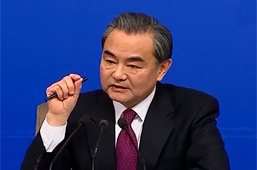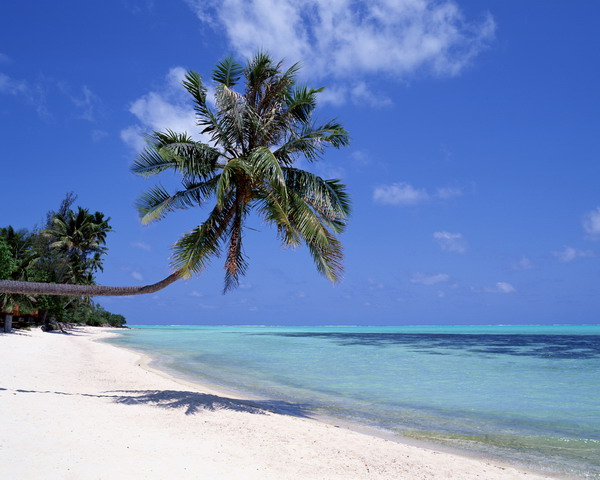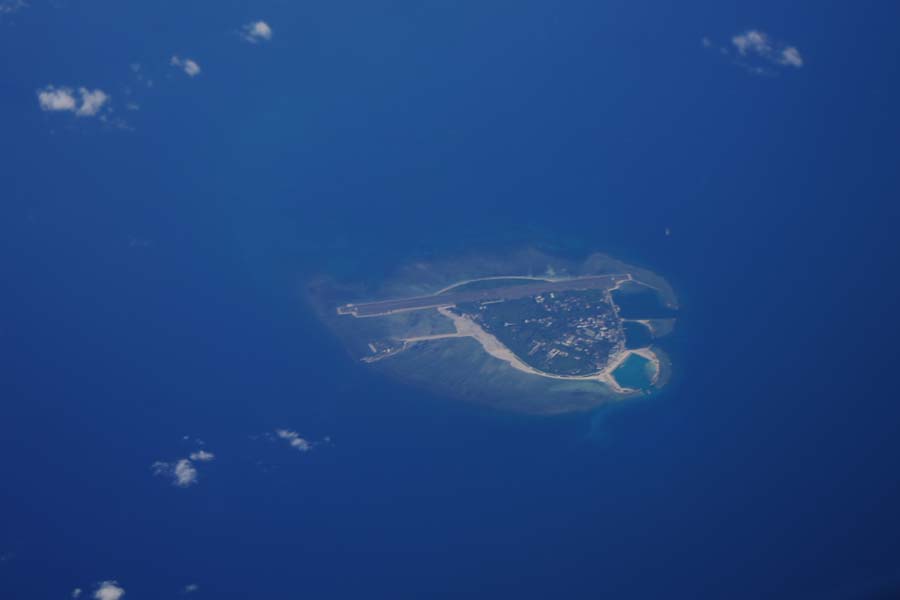(1) Seabed Topography and Sedimentary Geology
The South China Sea is a deep sea, with the characteristic continental shelf, continental slopes and deep-sea basin. The basic characteristic of the seabed terrain is ladder-like decline from the shore to the center of the basin, but the prominent feature is the gentle southern and northern slopes and steep eastern and western slopes.
The continental shelf of the South China Sea is relatively wide and gentle in the north and south, especially the south, where it is the accumulation type. The western and eastern parts are of the accumulation-erosion type, and are thus steep and narrow. The section to the west of Luzon is only 5 kilometers in width, with a very steep slope.
The continental slope in the northern part of the South China Sea descends in a graded manner from the northwest to the southeast. Dongsha, Xisha and Zhongsha Qundao are distributed on platforms of different depths. Aside from Huangyan Dao, Zhongsha Qundao is a huge submerged atoll, with a series of intermittent banks and reefs. In the southern part of the South China Sea, the continental slope is broader, harboring Nansha Qundao and the Nansha Trough. Nansha Qundao is a submarine plateau, dotted with islands, sandbars, reefs and banks and other natural terrains. The continental slope in the west is also wide, with a pronouncedly flat surface, while that in the east witnesses North Luzon Trough and the Manila Trench to the west of Luzon Dao.
The central basin of the South China Sea is situated roughly in the continental slope between the Zhongsha Qundao and Nansha Qundao. With a deep-sea plain extending northeast as the main body, it measures about 1,600 kilometers in length and 530 kilometers in width. The shallower north averages 3,400 meters in depth while the deeper south measures about 4,200 meters. On the deep sea plain, there tower a number of isolated underwater seamounts, which are volcano cones resultant from submarine volcanic eruption.
In the northern section, the continental shelf of the South China Sea has been primarily formed by land-based muddy sediments carried by Zhujiang River, while the outer shelf and the southern section are mainly comprised of sandy sediments, and modern fine sands and clay. Sediments in the central basin are mainly super-fine pelagic brown globigerina ooze and volcanic ash, with occasional manganese nodules and manganese crusts.
The South China Sea is located at the intersection between the Eurasian Plate, the Pacific Plate and the Indian Ocean-Australian Plate, with a complex structure. It is generally believed that the oceanic crust in the central basin was formed at the end of the Oligocene and the beginning of the Miocene.
(2) Climate
Located in the tropics, the South China Sea falls within the typical monsoon climate zone. Around September each year, the northeast monsoon reaches the Taiwan Strait. From November to April the following year, the entire sea area is controlled by the northeast monsoon. The southwest monsoon beginning in April in the Strait of Malacca reaches the entire sea in June and reaches the peak in July and August.
For most of the South China Sea, the northeast monsoon reaches the peak in November, mostly at Beaufort scale 4 or 5, and occasionally up to 6 to 7. The gale area is located in the northern part of the South China Sea, the Bashi Channel and the waters of Nansha Qundao. In contrast, the southwest monsoon wind is generally weaker, mostly below Beaufort scale 4. However, in Yingge Sea, to the west coast of Hainan Province, the strongest winds throughout the year are recorded in spring. The annual mean number of gale days in the South China Sea is fewer than that in the Bohai Sea, the Yellow Sea and the East China Sea. In offshore Vietnam, the vicinity of Xisha Qundao and Nansha Qundao, the figures are 50 days, about 40 days, and under 40 days respectively. The eastern coastal areas of Guangdong near the Taiwan Strait tend to have more windy days, sometimes up to 100.
Typhoon is the main disastrous weather system in the South China Sea, including about 10 typhoons and tropical storms each year on average. About half of those are from the waters to the east of the Philippines and the rest are indigenous, mainly to the north of latitude 10°N and mostly between June and September. From October to December, the generating area is moved southward to the middle. Storm surge as the primary accompanying disaster mainly affects the area between Shantou and Leizhou Peninsula, including coastal Guangdong, northern Vietnam and the Philippine coast.
The temperature in the South China Sea is very high throughout the year, up to 28℃ in July. Even in January, the temperature in the southern part can reach 26℃, while that in the northern part is usually at 15℃ or above. The annual precipitation of varies from 1,000 mm to 2,000 mm, with significant regional differences. There are dry and wet seasons in the northern part. In the dry season, from November to March the following year, the precipitation is 600 millimeters less than evaporation. In the rainy season from May to October, the precipitation exceeds evaporation by 800 millimeters. Actually, there is no "dry season" in the real sense of the word for the southern part, where the precipitation is more than the evaporation throughout the year. The period from October to January the following year is especially worth noting for being the real rainy season, with precipitation about 750 millimeters greater than evaporation. In Nansha Qundao, the annual precipitation can be up to 2,200 millimeters, over a rainy season of up to 170 days.
The South China Sea is not much affected by fogs, which mainly occur in Beibu Bay and the coastal waters of Guangdong. Haikou averages the foggy days annually, but at only 41 days. Those for Naozhou Dao and Weizhou Dao are 24 days and 19 days respectively, while those for the rest waters are below 15 days. The Yingge Sea and Xisha Qundao have almost no fog throughout the year.
(3) Hydrology
a. Currents
The frequent monsoons and its primary location in the tropics have a great influence on the hydrological characteristics of the South China Sea. With strong monsoon drift, its current changes with the change of monsoon. In the period with southwest monsoon, the northeastern drift prevails, while in the period with northeastern monsoon, southwestern drifting becomes dominant.
During the period of southwest monsoon, water from the Java Sea and the South China Sea flows northeastward across the outer sea of Vietnam to the south of the southern part of Taiwan Island, where the main current joins the Kuroshio and the other current flows into the East China Sea through the Taiwan Strait. Along the coast of Vietnam, the drifting gathers momentum and becomes a strong summer-time current of the South China Sea. Along the coast of Guangdong, Zhujiang River estuary flows with the southwest monsoon to the northeast. On the west bank of Luzon, a stream of water from the Sulu Sea flows northward. Thus, in the western, northern and central parts of the sea, a unified pattern of northeastern drifting is shown. In addition, the sea level of the southern part declines due to loss of water caused by constant northward transport of water under influence of monsoon drifting, while that of the northern part rises, causing the northeastern drifting along the coast of Vietnam to turn back and flow southwest at about latitude 11°N, to make up for the water loss in the southern part, forming a clockwise horizontal circulation.
During the northeast monsoon, the flow of currents is opposite to that of the southwest monsoon. Some of the water from Kuroshio flows into the South China Sea through the Bashi Strait. At the same time, some of the water from the coast of East China Sea flows into it through Taiwan Strait, forming in the west a southwestern drift for the entire length from north to south. The drift gathers momentum in the Vietnamese coast and becomes one of the strong currents of the South China Sea. In the eastern part of the South China Sea, the northwestern current from the Sulu Sea evolves into a western current in the central part and joins the mainstream of the coast of Vietnam. Along the coast of Kalimantan, there is a weak southwestern coastal current. However, as the southwest monsoon drifting reaches full development in winter, part of the seawater gets accumulated near the southern part of the continental shelf, pushing the sea-level up. At the same time, the sea level of the northern part falls due to loss of water. Therefore, some of the water drifting southwest flows back towards the northeast and forms a countercurrent, joining the western drifting to create a counterclockwise horizontal circulation. The western halves of the two circulations are monsoon drifts, while the eastern halves are compensation currents. Meanwhile, the sea level of the South China Sea is susceptible to obvious seasonal fluctuations.
In winter and summer, there is a sub-current of Kuroshio flowing west and southwest in the seas to the south of Taiwan and the outer seas to the northwest of Luzon through the Bashi Strait respectively, and then southwest in the deep-water area beyond the continental slope of Guangdong.
Uplift currents are widely distributed in the South China Sea throughout the year, especially during the monsoon season in summer. The edge of the continental shelf to the east of Vietnam, the eastern coast of Hainan Island and the coast of eastern Guangdong are maritime areas with prominent uplifting currents. In winter, there are also occasional uplifting currents in the central coast of Vietnam, along the coasts of eastern Guangdong and in the shoals of Taiwan.
b. Temperature
In addition to the northern coast, surface water temperature of the South China Sea is high throughout the year, with relatively uniform distribution and moderate horizontal gradient. It averages about 22.6℃ for the coastal waters of Guangdong and 28.6℃ for those of Bangka Island, with marked difference between north and south. In winter, due to the intrusion of cold water from the Taiwan Strait, the lowest monthly average surface water temperature can drop to about 15℃ in the eastern coast of Guangdong in the north, and the horizontal gradient can also be prominent. The majority of the rest sea areas can still reach 24℃-26.5℃ in surface water temperature, and even 27℃ in the southern continental shelf area. The convective mixing in the shallow water of the continental shelf can reach the seabed, bringing about uniform vertical distribution in water temperature. However, in the deep water area, the thermocline is still strong, with an upper homogeneous layer of about 80 to 100 meters. At that time, some areas in the northeastern part of the South China Sea, for example, the vicinity of continental slope, the orientation of the upper thermocline is contrary to its lower counterpart, with upward and downward divergent layers along the isotherm. Therefore, points of zero velocity are prone to occur in the current, creating upturned directions between the upper and lower thermoclines. That is an important phenomenon in the vertical structure of temperature in the northern part of the South China Sea. In summer, the distribution of surface water temperature in the entire area is almost uniform, with moderate horizontal gradient. In the northern part, the surface water temperature measures about 28℃, and that in the southern part measures about 30℃. A few low-temperature zones of limited areas are found only in the eastern part of Hainan Island, eastern Guangdong and the coastal areas of Vietnam, caused by uplifting currents resultant from the southwest monsoon. Seawater stratification is significant in most of the sea area, where thick thermoclines are prone to occur.
The seasonal variation of the water temperature is moderate, while the annual scope of change decreases from north to south, with that in the sea of eastern Guangdong standing at about 10.8℃, that in the south of Beibu Bay and the adjoining seas of Xisha Qundao at about 8℃ and 5.6℃ respectively.
c. Salinity
There are obvious regional differences in salinity distribution in the coastal and offshore areas of the South China Sea. Due to control of low-salt coastal water, the salinity of coastal areas is low, and prone to seasonal variation, from 2 to 3. In contrast, the salinity distribution in the deep water area of the outer seas is dominated by monsoon circulation, and the salinity is generally higher with more moderate horizontal gradient, often below 1 annually. In winter, high-salt water tongues from the Pacific Ocean stretch from the Bashi Strait to the southwest of the South China Sea along the path of the monsoon drifting. Meanwhile, low-salt water tongues extend northeast from the middle of the South China Sea, along the opposite direction. Under influences of the southwestern monsoon in summer, the low-salt water tongues extend northeast along the direction of the monsoon drifting, and the high-salinity in the northern part of the sea is forced to the north, while on the north bank of Kalimantan, the salt water tongues move southwest. Therefore, the simultaneous existence, advance and retreat, and growth and decline of high-salinity water tongues and their low-salinity counterparts in both winter and summer are resultant from circulations and their changes, which also lead to significant seasonal changes in the salinity of offshore areas, with a greater annual variation in the central area.
In addition, the low-lying high-salinity water is pushed to the surface by uplifting currents, and several surface areas with high-salinity are formed in the eastern coast of Guangdong and Hainan.
d. Tides
Tides in the South China Sea are mainly harmonic tides coming from the Pacific Ocean through the Bashi Strait, featuring irregular diurnal tides for most of the area. Regular diurnal tides are distributed in Beibu Bay, the central and northern parts of the western bank of Luzon, along the coast of Miri in Kalimantan, the Karimata Strait and the seas adjoining the Gulf of Thailand. Irregular semi-diurnal tides are scattered in the Bashi Strait, the coast of Guangdong, some of the coastal waters of central and southern Vietnam, the southeastern part of the Malay Peninsula, and coastal waters in northwest Kalimantan. There is an amphidromic system with constituents (K1) near the estuary of Beibu Bay
The tidal range of the South China Sea is moderate, while that in the west coast of Guangdong, Beibu Bay, Indochina Peninsular and Kalimantan is prominent, often reaching 4 meters and above. That in the east coast of Guangdong comes next, at about 3 meters and that in central South China Sea, the west coast of Luzon and central coast of Vietnam is the smallest, at only about 2 meters. The maximum tidal range is observed at Baihai Port in the northernmost tip of Beihai Bay, reaching up to 7 meters. There are two tide-free spots in the Gulf of Thailand for semidiurnal tides; there are also wave-node (no-tide) areas with dense concurrent lines in Beibu Bay. There are two no-tide spots for diurnal tides, with one in Gulf of Thailand and the other in the south of Beibu Bay. The currents of the South China Sea are weak, with speeds below 50 cm/s, and those of semidiurnal tides are even weaker. The currents in Beibu Bay and the western coast of Guangdong are slightly stronger, often at speeds of 100 cm/s. The maximal current flow rate of Qiongzhou Strait can be up to 250 cm/s.
e. Waves
In winter, northerly waves prevail in the South China Sea, while southerly waves are dominant in summer, with September as the transitional period. In October northerly waves are prevalent in areas to the north of latitude 10°N; from November to April the following year, the whole area is encompassed in southerly waves. In May, areas to the south of latitude 5°S, southerly waves prevail, while those to the north have winds with changeable directions. In June, the southerly waves prevail. The South China Sea features gales and strong waves, with an average wave height of about 1.5 meters in most of area annually, while that of Beibu Bay and the Gulf of Thailand varies from 0.5 to 1.5 meters. In winter, wave height steadily decreases from the northeastern and central sections—with a maximal value averaged about 2 meters—to the southern section and the eastern and western coasts. In summer, wave height is prone to the influence of the southwest monsoon and typhoon activities, sometimes exceeding 10 meters. Averaged 6 to 7 seconds, the cycle of the South China Sea can reach 15 seconds or longer.
(4) Land Runoff
Major rivers flowing into the South China Sea from the Chinese Mainland include Zhujiang River and the Han River, while those from the Indochina Peninsula are the Red River and the Mekong River. The Indochina Peninsula is blessed with developed river networks, with one river flowing into the sea from Vietnam for every 20 kilometers along the coast.
Zhujiang River is the largest river system in South China, known as one of the seven major rivers of China, on a par with the Yangtze River, the Yellow River, the Huaihe River, the Haihe River, the Songhua River and the Liao River. Formerly known as the Yuejiang River, it is the third longest river in China, extending for 2,400 kilometers in full length. In terms of annual flow, it is the second largest river. Originally used to refer to the watercourse from Guangzhou to the estuary, the term Zhujiang (i.e., Pearl River) was gradually made a collective term for the Xijiang River, the Beijiang River, the Dongjiang River and rivers adjoining Zhujiang River Delta. Its main stream the Xijiang River originated from the Maxiong Mountain in Zhanyi County, Qujing City in the northeast of Yunnan Province and flowed through Yunnan, Guizhou, Guangxi, Guangdong and Hong Kong SAR and Macao SAR, before joining the Beijiang River in Sanshui, Guangdong and flowing into the South China Sea via eight estuaries in Zhujiang River Delta. Zhujiang River Basin covers an area of 442,100 square kilometers in China, and about 11,000 square kilometers in Vietnam.
The Hanjiang River is the second largest river in Guangdong Province, and the largest river in Chaozhou, Shantou and Jieyang. Extending from its origin to Dongxi estuary, it flows for a total of 470 kilometers, with a drop of 920 meters and a total area of about 30,000 square kilometers. In the Tang Dynasty, it was renamed from the original name of Exi (literally "the Evil Brooks") in commemoration of the contribution made to Chaozhou by Han Yu, the Tang-Dynasty literary colossus after his demotion there. Originating from the Tingjiang River in the Wuyi Mountain to the southwest of Ninghua County, Fujian Province, it began to be known as the Hanjiang River after joining the Meijiang River, which is of southern origin, at Sanheba, Dapu County, Guangdong Province. After Chaozhou, the watercourse enters the Hanjiang River Delta as two streams, which flow into the South China Sea in Chenghai County and urban Shantou. The Hanjiang River is an important watercourse linking Chaozhou, Shantou, Xingshi County and Meixian County to Changting County of Fujian.
The Red River is the largest river in Vietnam, and the largest water system in northern Vietnam. It is so named for its red water, because of the vast quantities of red soil carried therein. Originating in Dali, Yunnan, China and known as the Yuanjiang River in the upper reaches, it flows for 1,140 kilometers and covers an area of about 87,000 square kilometers. With its lower reaches of 500 kilometers in Vietnam, it enters country from the Chinese county of Hekou.
"Mekong" is a transliteration of Laos, meaning "the mother of happiness." Mekong River, also called the Chao Phraya River, is known as the Lancang River in China. Originating from Qinghai Province of China and extending for 4,668 kilometers, it is the longest river in Southeast Asia, the seventh largest river in Asia and the twelfth largest river in the world. It flows through the Tibet Autonomous Region and Yunnan Province, forms part of the international border between Myanmar and Laos and that between Laos and Thailand, meanders through Laos, Cambodia and Vietnam, and finally joins the South China Sea in the south of Ho Chi Minh City (Saigon). After winding through the Cambodian capital Phnom Penh, the Mekong River is separated into branches, and the two flowing into Vietnam are known as Tiền Giang (literally "the Front River") and Hậu Giang (literally "the Back River"). At the estuary, they are further divided into nine tributaries into the sea. Therefore, it is also known in Vietnam as Cửu Long Giang (literally "the Nine Dragons River").















